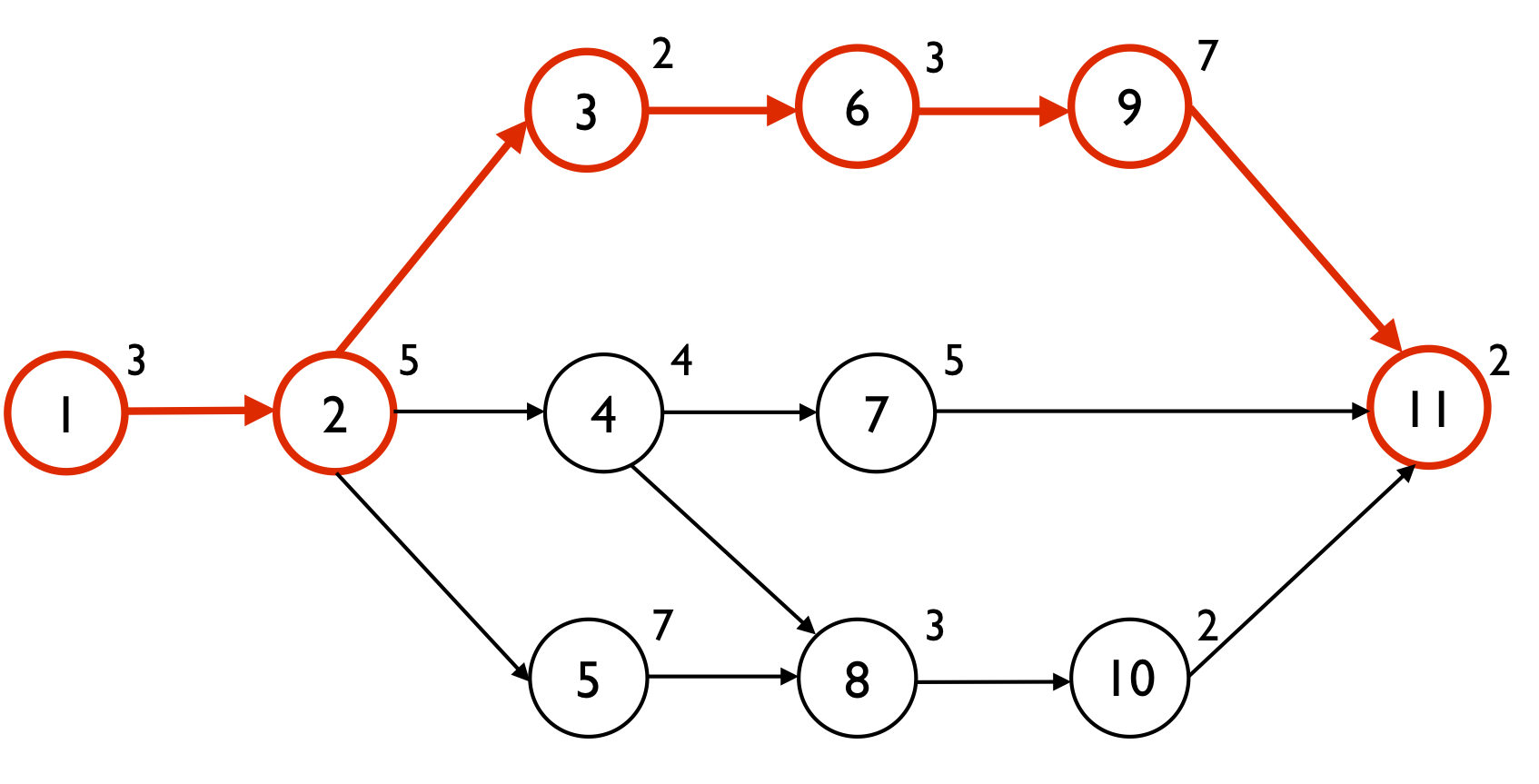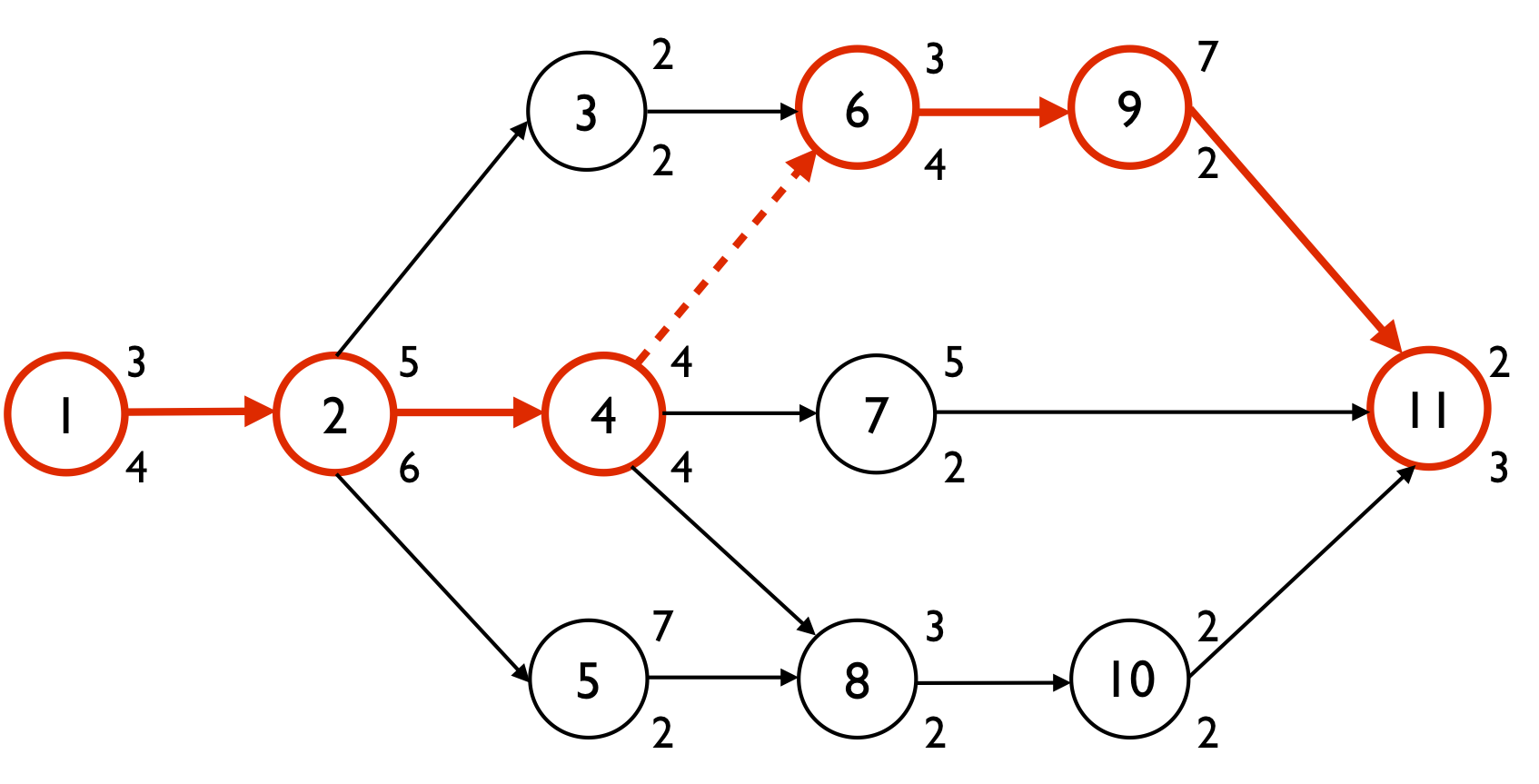The critical path or the critical chain? The difference caused by resources
When finishing this article, you can take a short "Test Yourself" quiz, to ensure you fully understood this topic.
It is a wise and generally accepted management principle to put a focus on the constraining or limiting factor of a system that determines the system’s goal. In project management and scheduling, the scheduling objective is the objective during the construction of a project baseline schedule.
In this article, it is assumed that the scheduling objective is the minimization of the total project duration. A distinction is made between the construction of a schedule with and without renewable resource constraints, as summarized along the following lines:
- The critical path: no renewable resources limit the scheduling degrees of freedom
- The critical chain: renewable resources limit the scheduling degrees of freedom
Critical path
Figure 1 displays a project network with 11 activities and finish-start precedence relations between them. Each number above the node denotes the estimated duration of the activity. In the PERT/CPM scheduling approach, projects are not subject to limited renewable resources, and hence, the construction of a baseline schedule boils down to sequencing all activities according to their precedence relations. The minimal duration of the project is determined by the length of the critical path, which is a sequence of activities in the project network, as shown in figure 1 in red and bold. The attentive reader has noticed that a second path (1 - 2 - 5 - 8 - 10 - 11) is also equally critical since it has the same total duration of 22 time units. Indeed, in a network, multiple critical paths can occur.

Figure 1: An example project network with the critical path equal to 22 time periods
Critical chain
Scheduling projects within the presence of resources with a limited availability might lead to resource conflicts. In figure 2, it is assumed that the availability of the resource is restricted to six units for all periods of the project. The earliest start schedule displayed at the top of the figure shows a resource conflict between period 8 and 13 since the total use of the renewable resource by activities 3, 4, 5, 6 and 7 exceeds its limited availability of 6. In order to solve this resource conflict, activities need to be shifted further in time to time periods where resources are still available (see “Linking resources to activities: Resource availability and resource demand”). The way these resource conflicts have to be solved depends on the scheduling objective (see “Resource constrained project scheduling: What is my scheduling objective?”). The bottom schedule of figure 2 shows a resource-feasible schedule with a minimal project duration of 24 time periods as a result of shifts in activities 5 and 6.

Figure 2: The resource profiles for the critical path schedule and a resource-feasible schedule
A comparison between the resource-unconstrained critical path schedule (length = 22) and the resource-feasible resource-constrained schedule (length = 24) leads to the following two conclusions:
- The critical path duration is always smaller than or equal to the resource-feasible project schedule duration. Indeed, since the limited availability of renewable resources puts an extra constraint on the degrees of freedom during the construction of a baseline schedule, the critical path length is a lower bound on the length of the resource-feasible schedule duration.
- In analogy to the critical path, which determines the subset of project activities that are responsible for the length of the project schedule, a similar concept, known as the critical chain, holds for a resource feasible schedule. However, while the critical path is the result of a simple sequencing approach, the critical chain depends on the scheduling objective and hence on the choice of activities that have been delayed. In the example, activities 5 and 6 have been delayed to solve the resource conflict, but another scheduling objective could result in other activities to delay and hence, another critical chain. The critical chain in the example is equal to the activity sequence 1 - 2 - 4 - 6 - 9 - 11 and consists of precedence relations as well as, unlike the critical path, resource relations. Figure 3 shows the resource link between activities 4 and 6 that has been added to the project network (the number below the node is used to refer to the resource demand). The extra resource link is added to prevent that activities 4 and 6 will be scheduled simultaneously.

Figure 3: An example project network with the critical chain equal to 24 time periods due to the incorporation of a resource arc between 4 and 6
© OR-AS. PM Knowledge Center is made by OR-AS bvba | Contact us at info@or-as.be | Visit us at www.or-as.be | Follow us at @ORASTalks


